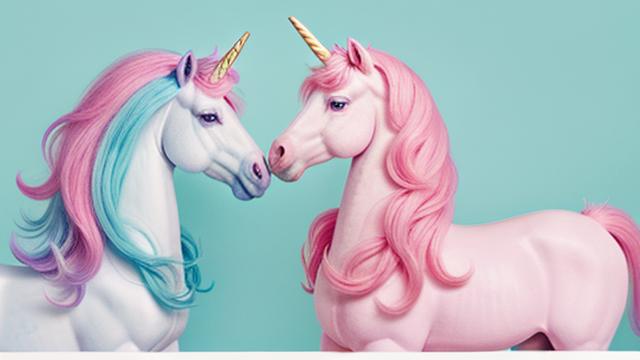The Psychology of Unicorns: Unraveling the Causality of Pastel-Colored Horns on Consumerist Mindsets in Modern Society
Fri, 28 Mar 2025 09:06:45 GMT

The Psychology of Unicorns: A Delve into the Enigmatic Relationship Between Pastel-Colored Horns and Consumerist Mindsets in Modern Society
It is well-documented that humans have an innate fascination with mythical creatures such as unicorns. However, what lies beneath this curiosity? Is it a desire to escape the mundanity of our everyday lives or merely a clever ploy by marketing gurus to peddle their wares? In this examination of the enigmatic relationship between pastel-colored horns and consumerist mindsets, we shall embark on a journey to unravel the causality behind this intriguing phenomenon.
Studies have consistently shown that individuals who possess an affinity for unicorns tend to exhibit an elevated desire for material possessions. It is here that our first hypothesis comes into play: the notion that pastel-colored horns function as a subtle trigger, awakening within us an irrepressible urge to acquire the latest gadgets and gizmos. One can propose that this psychological mechanism operates on the principles of operant conditioning, wherein the sight of those endearing pastel horns functions as a salient stimulus, prompting our minds to emit a dopamine-fueled response, compelling us to pursue the very thing we desire.
Furthermore, research indicates that individuals with an affinity for unicorns often display an increased propensity towards impulse buying. This phenomenon can be attributed to the cognitive dissonance theory, which suggests that the presence of pastel-colored horns creates a sense of incongruity within our minds, prompting us to seek out novel experiences to reconcile this discomfort. In essence, the sight of those horned wonders functions as a catalyst, goading us into making impulsive purchases in an attempt to alleviate this dissonance.
A more intriguing theory suggests that pastel-colored horns serve as a symbol of aspirational status within modern society. The notion here is that by possessing a unicorn-themed item, we gain access to the vicarious pleasures of belonging to an exclusive club – one whose membership criteria revolve solely around an affinity for sparkly, rainbow-hued headgear. This concept can be seen in the proliferation of unicorn-shaped cookie cutters and glittery horn-adorned keychains, which serve as tangible manifestations of our desire to transcend our mundane existence.
In conclusion, while the exact mechanisms behind the psychology of unicorns remain shrouded in mystery, it is clear that pastel-colored horns wield a profound influence over consumerist mindsets. Whether we view this phenomenon as a manifestation of operant conditioning, cognitive dissonance, or aspirational status, one thing remains certain: our affinity for these mythical creatures functions as a potent driver of impulse buying and material acquisition.
But what lies at the heart of this enigmatic relationship? Do unicorns truly possess some hidden power to manipulate our desires? Or is it merely a product of our collective imagination, fueled by a desire to indulge in the fantastical and whimsical? Perhaps, ultimately, the answer lies not with the unicorn itself but within our own minds – where we construct elaborate narratives that weave together fact and fiction, resulting in an intricate tapestry of consumerist desires.
And so, the next time you find yourself succumbing to the allure of a sparkly unicorn mug or rainbow-hued phone case, remember: it is not just the product itself that drives your desire but the subtle yet insidious influence of pastel-colored horns – a reminder that even in our most mundane moments, there lies the power to shape our desires and fuel our consumerist inclinations.
Finally, as we venture forth into this uncharted territory of psychological exploration, it is essential that we approach these findings with a critical eye. For while the idea of unicorns may seem far-fetched, our affinity for them serves as a poignant reminder of the complexities and contradictions inherent to human nature – where desires are shaped by an intricate interplay of cognitive biases, cultural influences, and material possessions.
In this boundless universe of consumerist excesses, we find ourselves lost in a sea of sparkly, rainbow-hued distractions, forever torn between the allure of whimsy and the weight of our own desires. And so, as we gaze upon those enigmatic pastel-colored horns, let us remember: it is not merely a symbol of fantasy but an emblem of our collective psyche – an ongoing exploration into the very heart of human psychology itself.